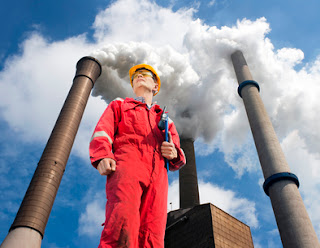Guest post by Australian energy retailer Lumo Energy.
"Australians are most concerned about electricity costs of all the major household expenses", according to Tim Wilson, Policy Director of the Institute of Public Affairs (IPA).
Perhaps an article by ABC News posted earlier this year stating that “Australian households are paying among the highest electricity prices in the developed world,” has heightened that concern considerably.
The article stated that the Energy Users Association of Australia (EUAA) released a report that showed that average electricity prices have increased by as much as 40 percent in the past five years – well above prices paid in the United States, Canada, Japan and the European Union.
At about the same time The Australian came out with an article that stated that energy prices will continue to rise because of higher fuel costs and the impact of climate change policies.
There are 9.5 million electricity customers throughout Australia and over 87 percent are households. Most of the residential electricity connections are along the east coast, in New South Wales, Victoria and Queensland where most Australians live.
Fortunately, both electricity and gas industries have been deregulated for residential and business consumers.
Deregulation has enabled consumers to compare energy prices and to choose from several electricity retailers in Australia.
Unfortunately, more than 90 percent of the country's electricity comes from the burning of non-renewable fossil fuels – 80 percent of which comes from coal.
Black coal is extremely efficient in producing energy but it is also one of the leading causes of global warming.
While Australia has fossil fuels like coal, the country also has abundant access to renewable fuels such as the sun and wind. In addition, falling (rain) water can be used to make hydro electricity and biomass is now being used increasingly in some States.
Renewable energy or green energy is Australia's solution to high electricity costs.
Green energy which is derived from renewable sources such as the sun, wind, biomass, wave power or hydro power not only helps in preserving our natural environment, it is also a cheaper alternative to fossil fuels.
Solar power is one type of green energy that is now gaining popularity in many countries around the world. Fortunately, the Australian Government reports that “the Australian continent has the highest solar radiation per square meter of any continent and consequently some of the best solar energy resource in the world.”
The report states further that, Australia receives an average of 58 million PJ (petajoule = 1015 joules) of solar radiation per year, which is approximately 10,000 times larger than its total energy consumption. But the current use of solar energy in Australia is still quite low. Solar energy accounts for only about 0.1 percent of Australia's total energy consumption.
However, the government's Clean Energy Initiative Solar Flagships Program managed by the Department of Resources Energy and Tourism has committed $1.5 billion to support the construction and demonstration of up to four large-scale solar power plants in Australia. These plants will use solar thermal and PV (photovoltaic) technologies. The government's goal is to establish up to 1,000 megawatts (MW) of solar power generation capacity.
According to the Clean Energy Council, it is evident from poll after poll that Australians understand that a strong renewable energy industry will secure a sustainable future for the nation. Each survey conducted in recent years has shown that more than 80 percent of Australians support renewables.
The Council states that "Australia's Renewable Energy Target has driven large amounts of investment in clean energy over the last decade." Additionally, renewable energy will also secure tens of thousands of jobs. If this goes on, it will continue to drive investments that will transform Australia's energy sector over the next decade and beyond.
Green energy is the way to go – if you want to save on energy costs and if you want to secure a sustainable future.

